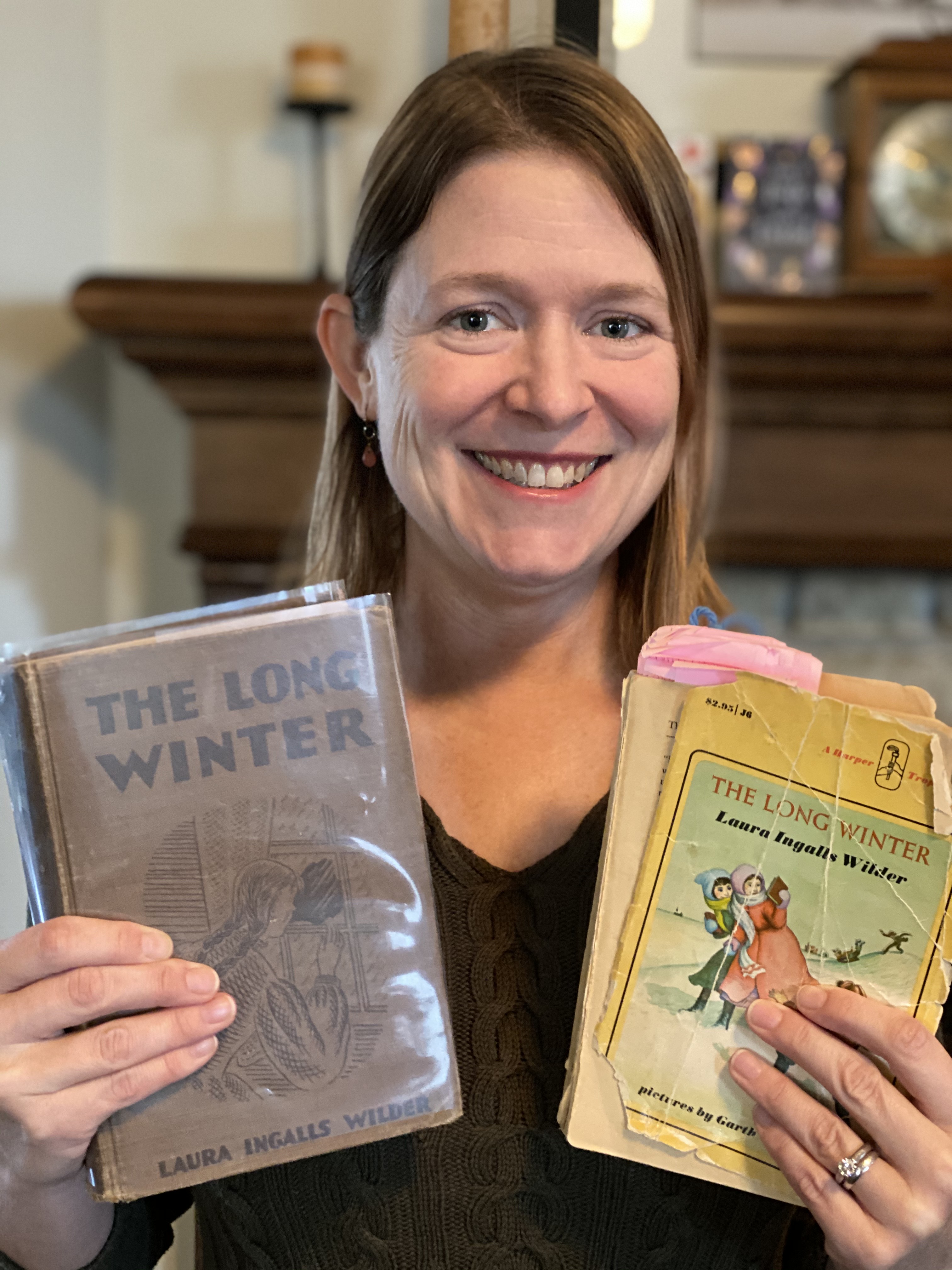Reflecting on “The Long Winter” with Barb Mayes Boustead - National Weather Service Heritage

Reflecting on “The Long Winter” with Barb Mayes Boustead
By Greg Romano (gregory.romano@noaa.gov) and Emily Senesac (emily.senesac@noaa.gov)For Barb Mayes Boustead, the record-breaking winter storms of 2008 and 2009 brought to mind another “Long Winter”: the one penned by Laura Ingalls Wilder, author of the Little House book series. As Boustead pulled The Long Winter, the sixth installment of the beloved saga, from her bookshelf during that brutal winter season, she read the tale of another. Though the re-reading of this childhood classic certainly transported Boustead to the past, it also drove her forward, serving as the catalyst for a decade-long inquiry into the climate and weather events surrounding one of history’s most compelling storm stories from a unique, modern-day perspective.
Published in 1940, this book tells the tale of the Ingalls family living on the Plains during the long, hard winter of 1880-1881. “I kept thinking: did this really happen?” Boustead, now a meteorologist instructor at the NWS Warning Decision Training Division, recalls. “As a forecaster, I had all these great tools, so I started looking things up.”
At first, there wasn’t much to go on, and her initial digging led to more questions, not answers. However, this didn’t discourage Boustead. “It snowballed from there”, she recalls, acknowledging the pun with a grin. Around the same time, Boustead was accepted as a Ph.D. student at the University of Nebraska, where she submitted the project as her dissertation.
As her search continued, she came across the Climate Database Modernization Project, an effort to digitize historical weather observations led by the National Centers for Environmental Information (NCEI). The discovery of this resource completely changed the game: she could access previously unavailable weather information (including temperature, precipitation, precipitation type, wind information, and more) taken near Wilder’s prairie residence in the 1880s.
In reflection, Boustead says her research uncovered several surprises, not the least of which was how, 60 years after the fact, Wilder’s descriptions of the storms she experienced were uncannily accurate. When compared to most recorded accounts of weather events in the 19th century, “She nailed it,” Boustead says.
In 2010, after collecting a significant amount of information, Boustead learned about “Laurapalooza,” an annual gathering of researchers, teachers, and hard-core “Laura” fans from many walks of life and disciplines. Given the nature of her research, she sent an abstract to present her findings to the attendees and was accepted.
“Never has a presentation I’ve given been so well-received,” Boustead recalls.
As she began trying to understand why these long-time fans and academics found her presentation so interesting, she learned they really appreciated its connection to the weather and climate described in the book, since the brutal weather was almost like a character in Wilder’s novel.
“The weather wasn’t just a background, it was an antagonist,” Boustead explains.
Turning the conversation to modern times, Boustead draws comparisons between the winter season of 2009-2010 and the “Long Winter” of 1880-81, noting several key similarities and differences. One of the most important distinctions between then and now is the difference in the level of impact that a winter storm has on a community. Despite jokes about supermarkets running out of milk and bread before a snowstorm, communities simply do not run out of food as they did in Wilder’s day. Although some may lose power for several days, running out of heating fuel for a month or more is simply unheard of, except in the most rural of communities. Though the “risk” factor of a snowstorm hasn’t changed since Wilder’s time, the definition certainly has.
“We don’t hunker down,” Boustead says, noting that people today leave their homes to go to work or elsewhere, putting themselves at risk on the highway. “[The Ingalls] didn’t put themselves into the elements. Their biggest stress element or risk was they didn’t know what was coming, so their fear was that they couldn’t go anywhere… If I leave, can I get back?”
Reflecting on the uncertainty that weather events created in the 19th century, it’s clear to see how far we have come in the last 150 years. “What they wouldn’t have given to have the forecasts of our day.”
Boustead’s scientific findings about the weather and climate of the season were recently published by the American Meteorological Society. Access that article here.
Additional Reading
-
“The Accumulated Winter Season Severity Index (AWSSI)” by Barbara E. Mayes Bousted, Steven Hilberg, Martha Shulski, and Kenneth Hubbard. Journal of Applied Meteorology and Climatology https://journals.ametsoc.org/doi/10.1175/JAMC-D-14-0217.1
